Printmaking is one of my favorite mediums. There’s something satisfying and magical about transferring an image you created onto another surface. Plus, there are so many fun and experimental ways to do it that make learning new techniques a joy and not a chore. I especially love finding alternative methods to techniques that may otherwise be cost-prohibitive for the at-home printmaker–namely, intaglio and lithography.
This idea of alternative processes was the basis of April’s Urban Armor workshop for teens. One of the techniques I taught was a version of lithography appropriately dubbed “kitchen lithography” because most of the supplies can be found in your pantry. Popularized by Emilie Aizier, there are lots of tutorials on how to do it on various internet sites. Finding a perfect guide is hard because the process is finicky and everyone does it in a slightly different way. It’s definitely something to experiment with on your own, but I’ll share what gave me the most consistent results.
If you’ve never tried lithography before, it basically consists of creating a master image on a plate (usually metal or stone); in this case, cola is used to etch the image into aluminum foil (it contains phosphoric acid–yum!). Printing from the plate works on the principle that water and oil repel each other: the plate is first coated with water, which doesn’t stick to the etched image because of the gum arabic in the cola. Oil-based ink is then rolled onto the plate, which sticks to the image but is repelled everywhere else by the water.
Several months back, the DMA hosted the wonderful exhibition Posters of Paris: Toulouse-Lautrec and His Contemporaries that not only featured fantastic lithograph posters from the late 1800s, but highlighted many of the tools and steps involved in lithography.
What you need:
- Small sheet of plexiglas
- Heavy duty aluminum foil
- Tape
- Sharpie permanent marker
- Scrubber pad/steel wool
- Vegetable oil
- White vinegar
- Cola (I used Coke)
- Sponge and bowl of water
- Lithography ink (NOT water-based)
- Latex gloves
- Printing brayer
- Printing baren or large spoon
- Heavy drawing paper
- Spray bottle
- LOTS of paper towels
Steps:
Prepare your plate
- Cut a piece of foil slightly larger than your sheet of plexi. Carefully smooth it down so it’s nice and flat; try to avoid creating any folds or wrinkles.
- Fold the edges of the foil around the plexiglas and tape them down to the back.
- Use your sponge to wet the surface of the foil with a little water, then sand it lightly with your scrubber until it’s dull and no longer super shiny.
- Wipe the surface down with white vinegar to clean off the plate.
Draw and etch your image
- When the surface of your plate is dry, draw an image on it with a Sharpie permanent marker. If you are adding text, remember to write backwards (your print will be a mirror image of your plate).
- After you’re finished with your drawing, make a cola bath for your plate: fill a shallow pan (big enough to accommodate the plate) with about 1/4″ of soda. Then place your plate in the cola drawing-side down.
- Let your plate soak in the cola bath for 10 minutes or longer.
- Remove the plate and rinse it in the sink, gently trying to remove as much of the Sharpie drawing as you can.
- Dry off your plate, then buff the surface using a small amount of vegetable oil and a paper towel. This should help remove the last bits of marker. Even though you may not be able to “see” your drawing any more, don’t panic! The cola should have etched it into the foil, creating a “ghost” image.
Ink your plate and print
- Load your brayer with ink: spread a small amount of ink on a paper plate, then roll it out with your brayer until the entire surface is coated evenly with ink. Set the brayer aside.
- Set your plate face-up on the counter. Wipe down the entire surface with a wet sponge.
- Roll the brayer across your plate. You should notice the ink start to stick to your ghost drawing. It may take a few passes of alternating between wiping your plate with water and inking it to ink the entire plate.
- Spray your drawing paper evenly with water and place it on top of your plate. Rub the back of your paper with a baren or the back of a spoon. If you have access to a printing press, that would be ideal.
- Carefully peel back the paper and leave it to dry.
As I said earlier, there are many variations on this technique that you can experiment with. People have drawn their image into the foil with grease/litho crayons, touche, even Murphy’s Oil Soap! Each of these options would be fun to try out and should give you different results.
To me, the trickiest part is inking the plate–I ruined the first two that I tried to print during that stage. I found that I didn’t use enough water when I was wetting my plate and the ink ended up sticking to everything instead of just my drawing. The nice thing is that it’s really easy to make a new one–just crumple up the old one and try again!
JC Bigornia
C3 Program Coordinator
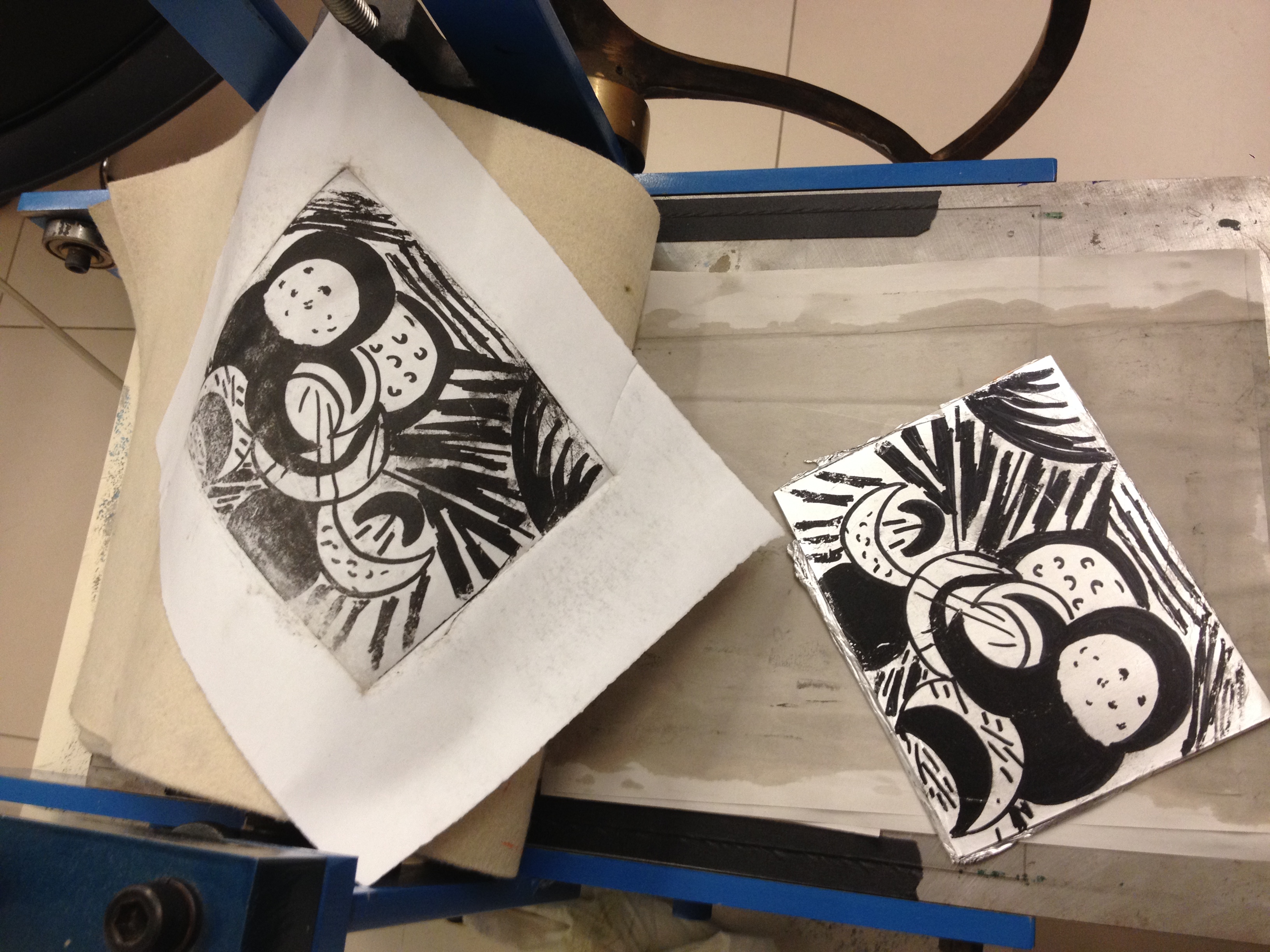
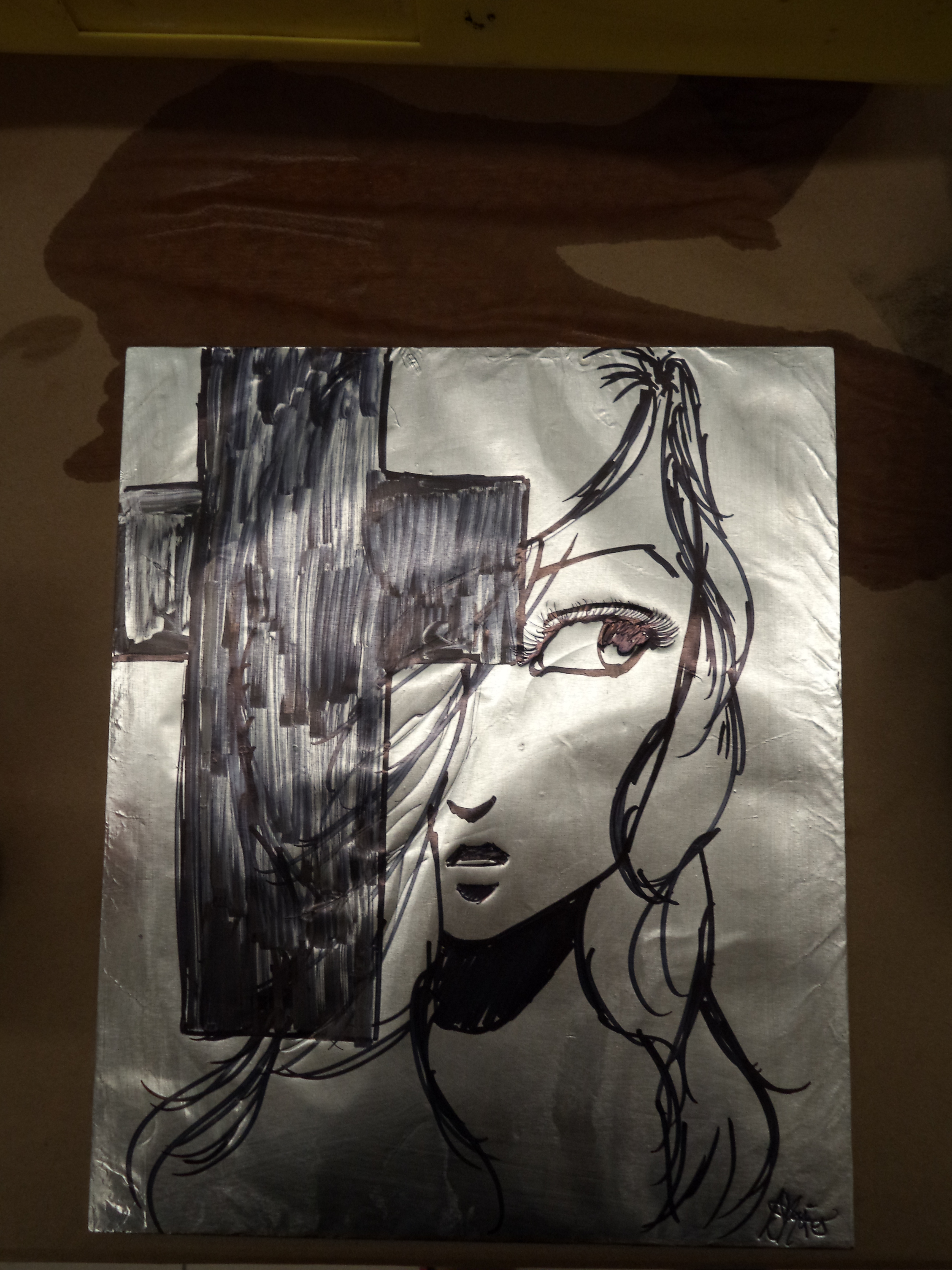
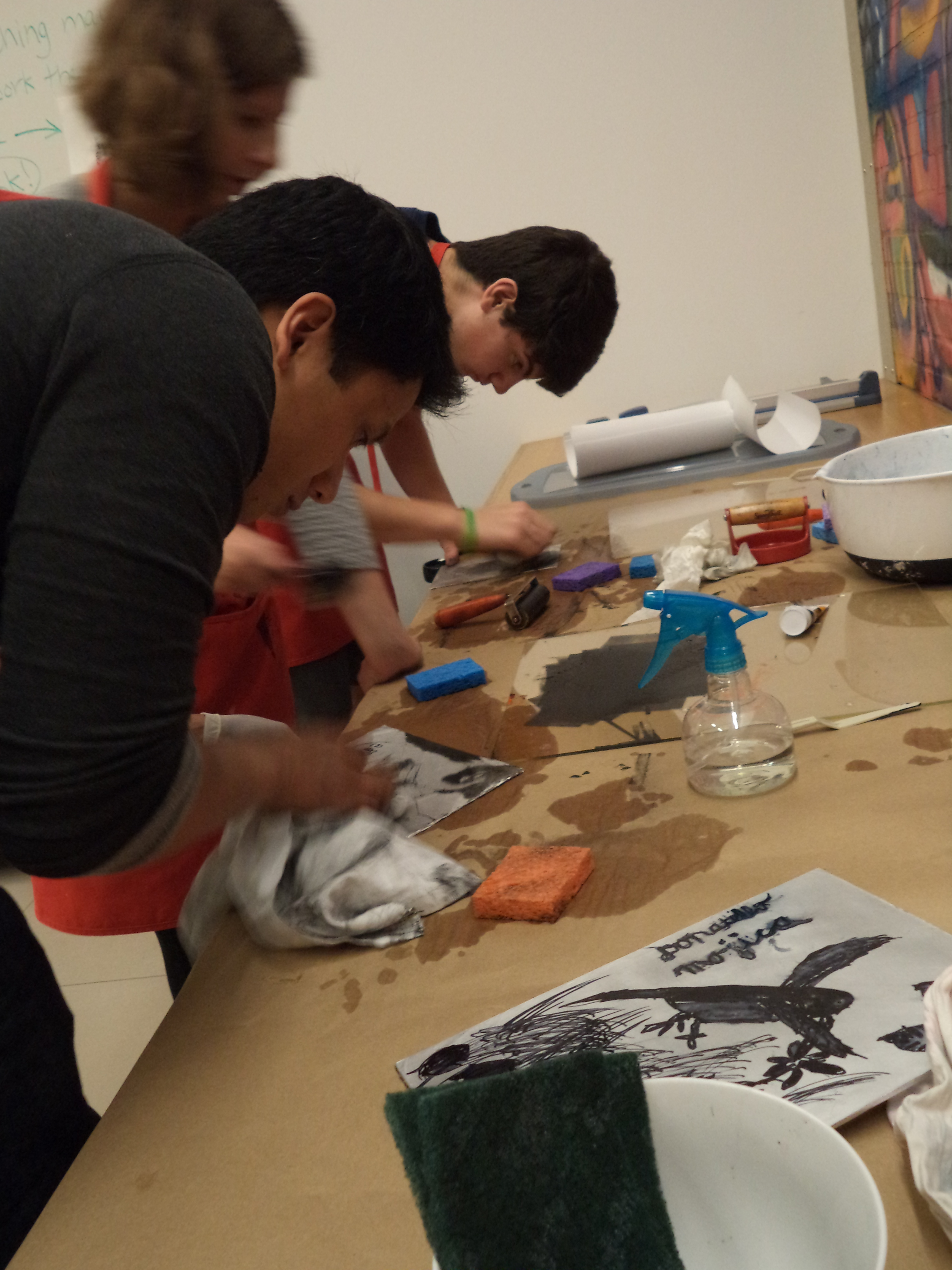
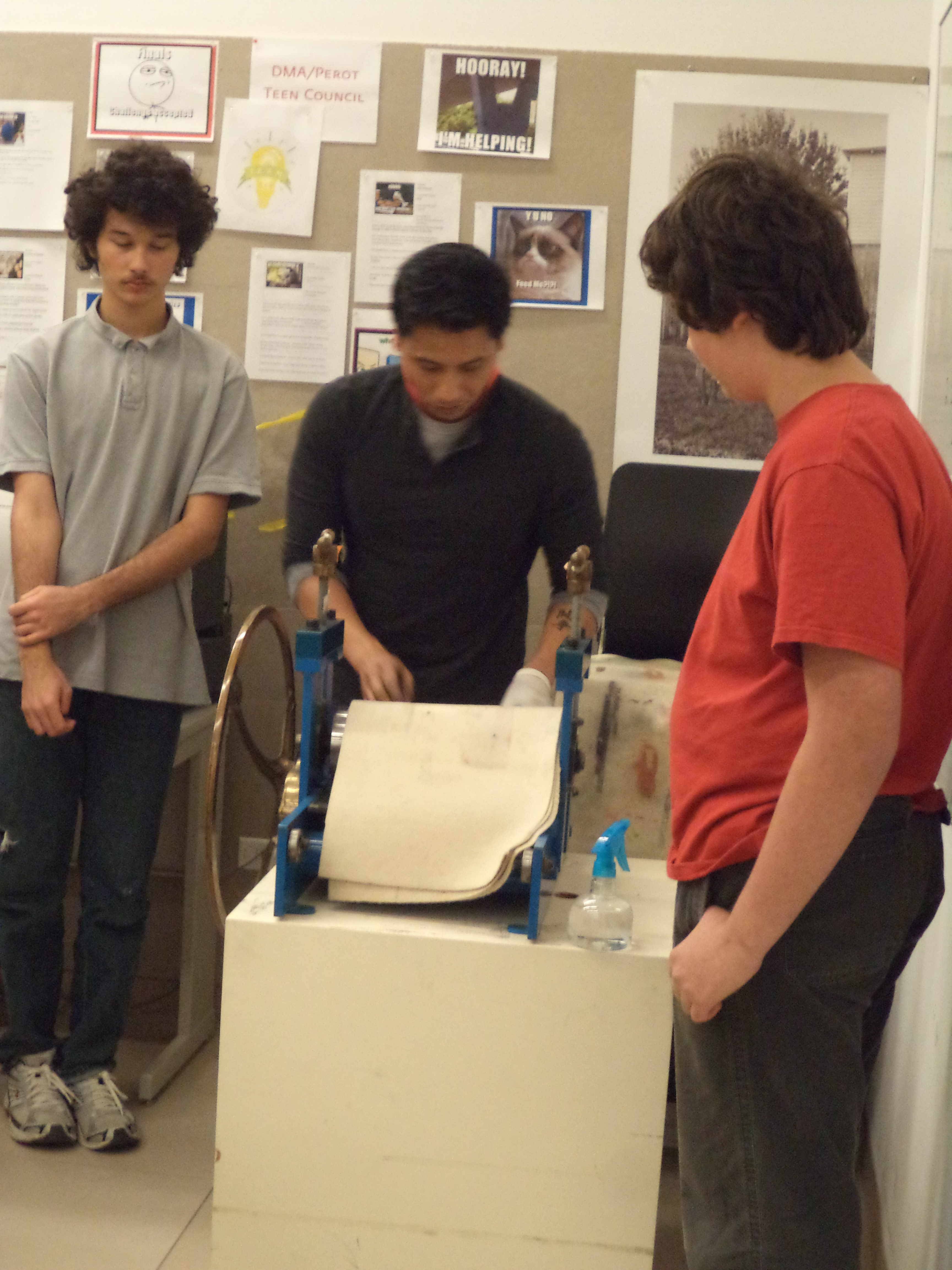
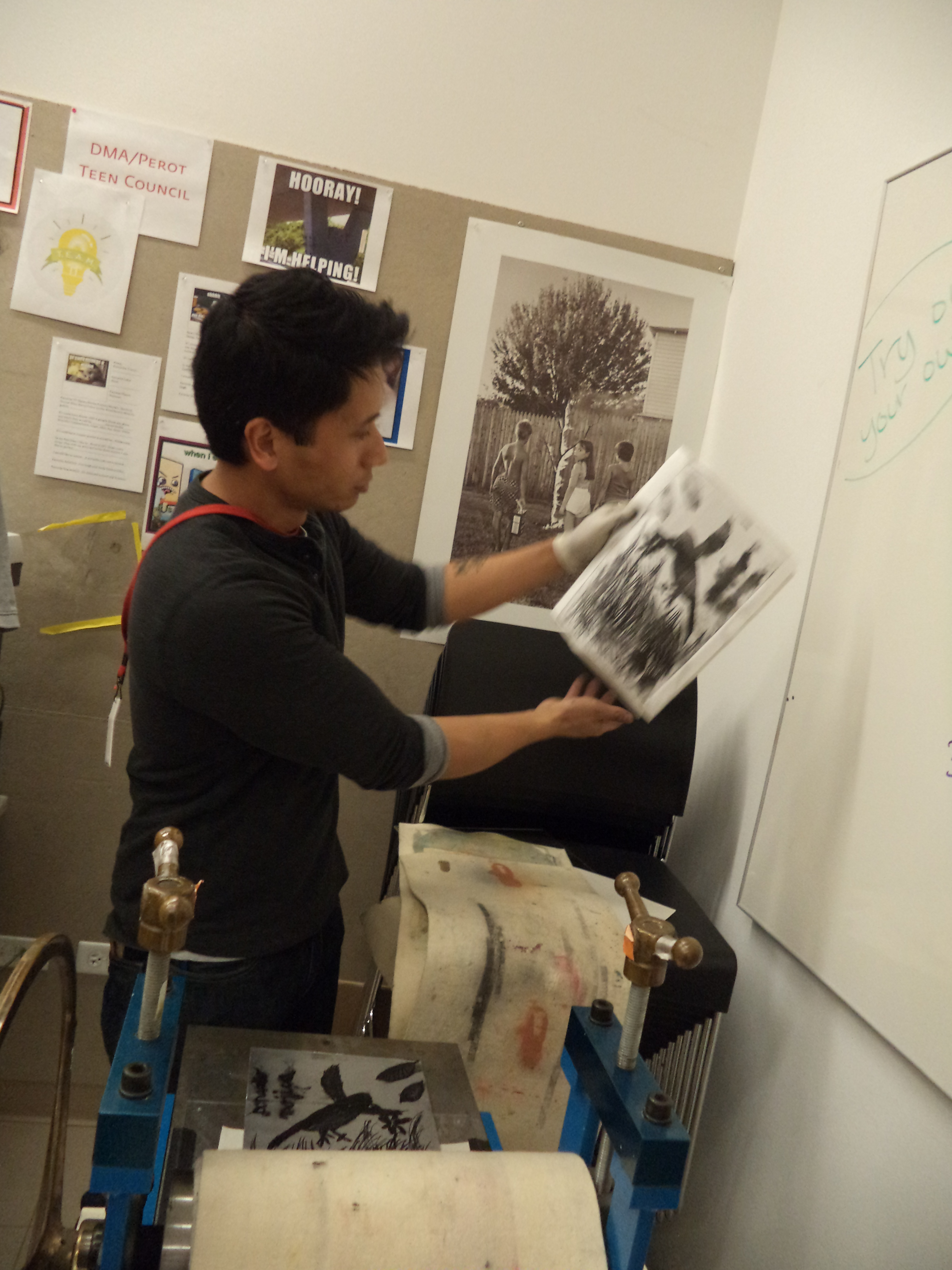
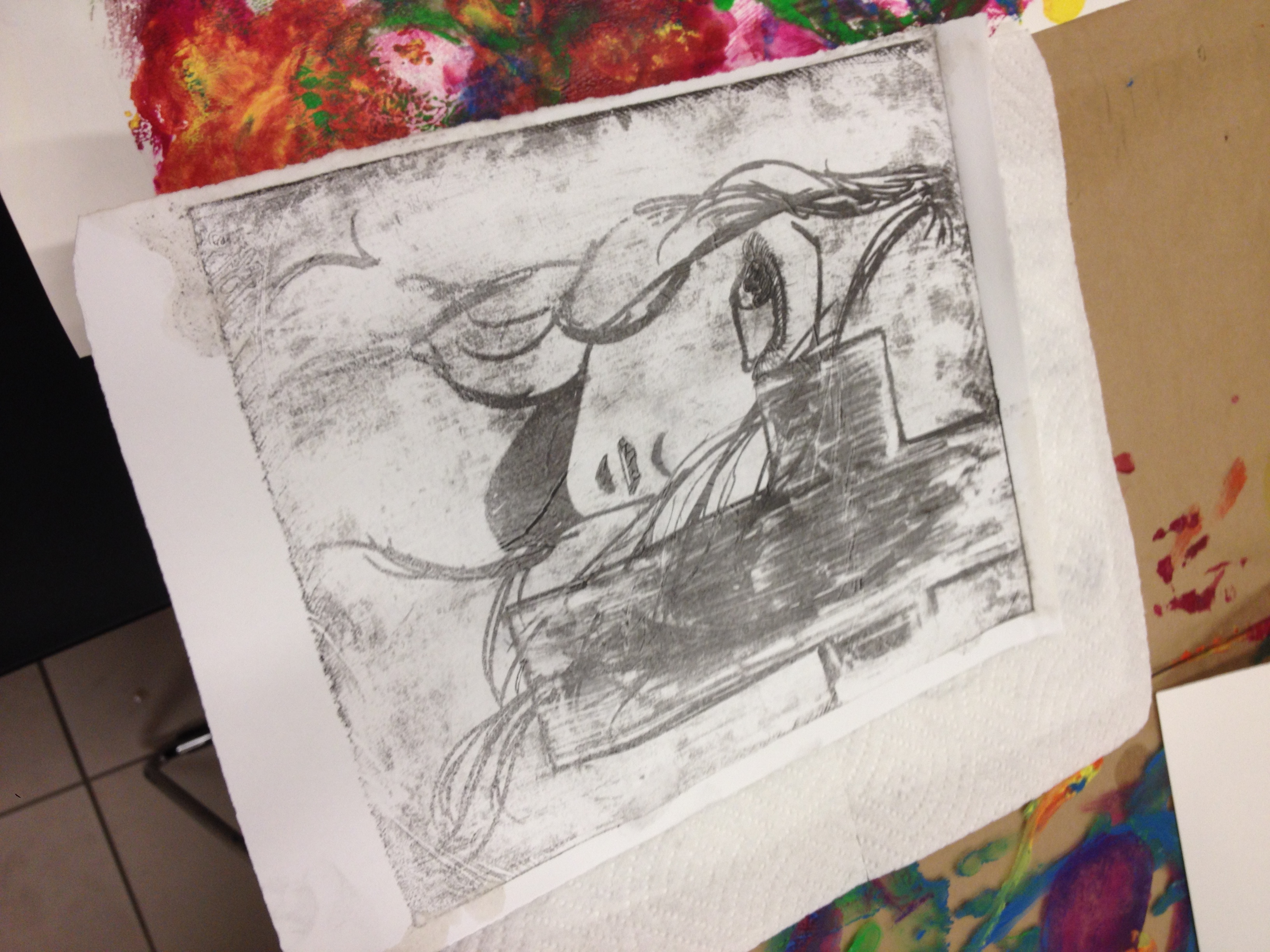
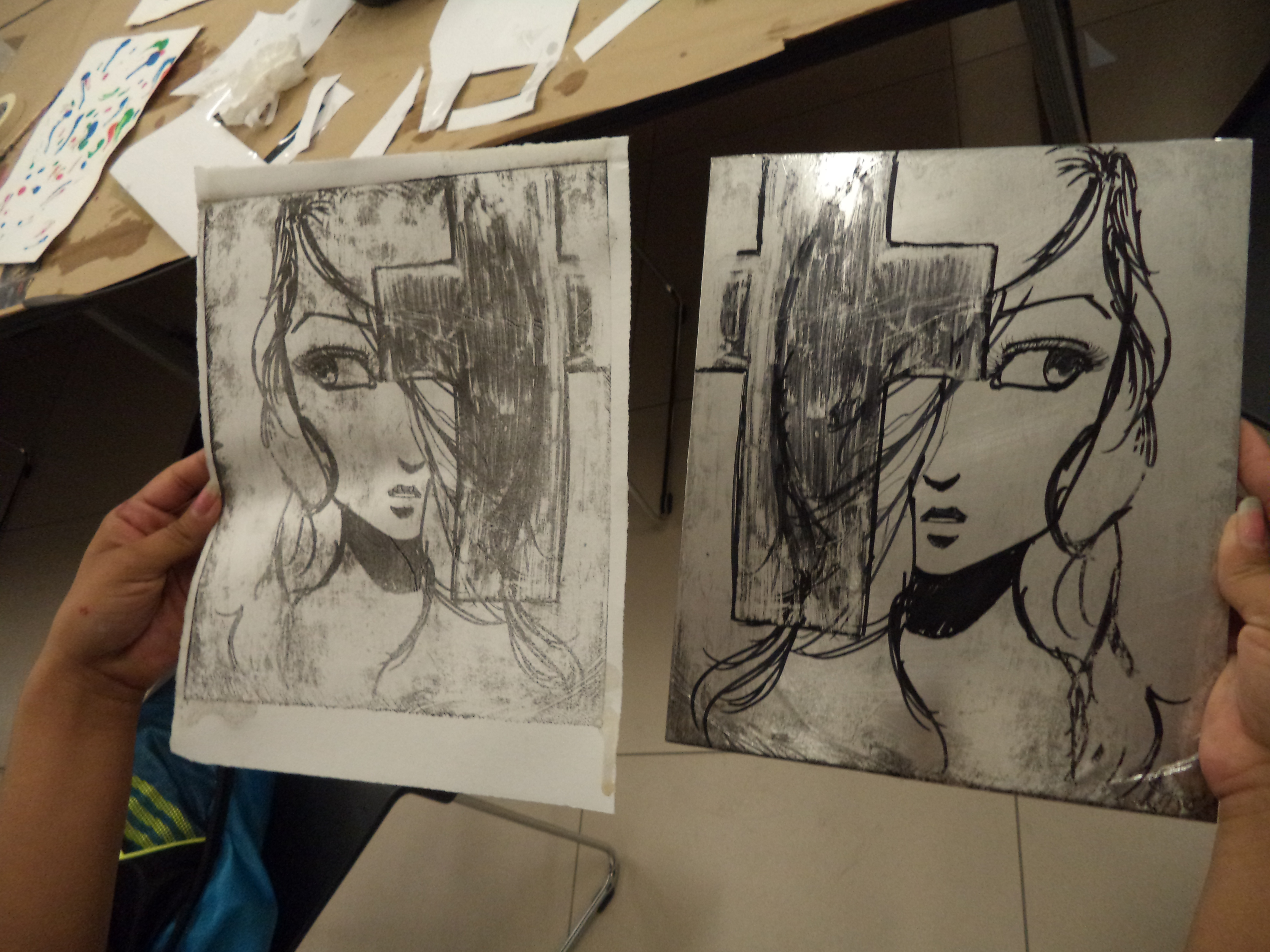
This is CRAZY! I must try it.
Reblogged this on Alissa Garcia Trevino – A Teaching Artist and commented:
Now, this is something that I’m definitely going to have to do with my classes. Amazing.
Thanks for reblogging, Alissa!